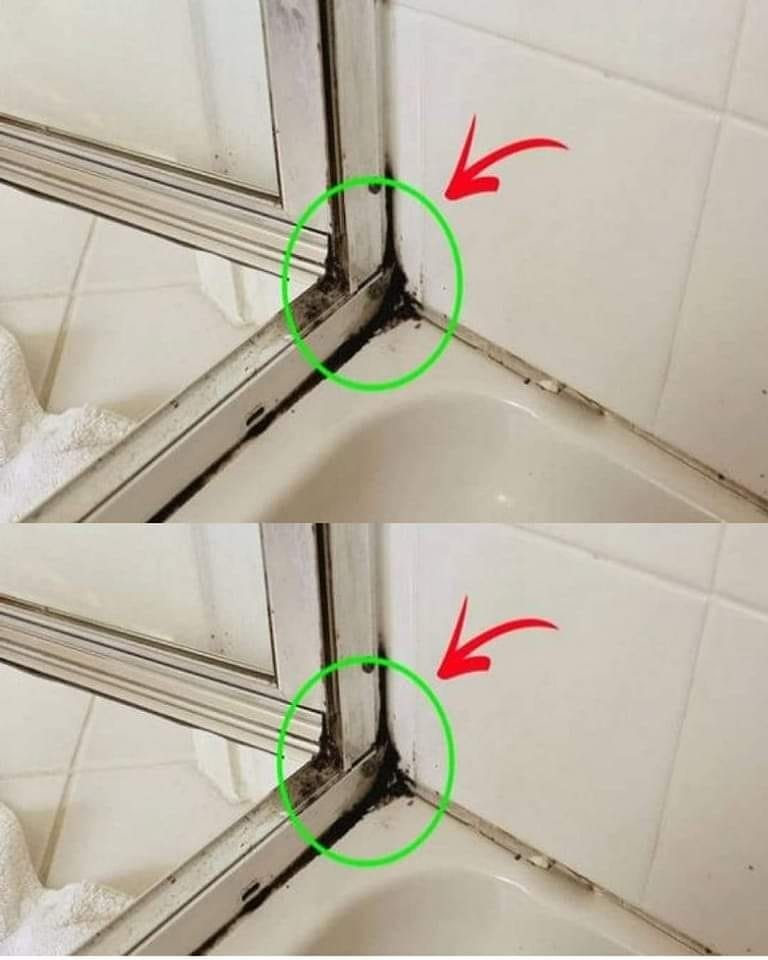ADVERTISEMENT
Mix one part bleach with two parts water in a spray bottle.
Apply the solution to the mildew-affected silicone.
Place cotton balls or strips soaked in the bleach solution directly onto heavily stained areas.
Let it sit for 30 minutes to an hour.
Scrub gently, rinse, and wipe dry.
Important: Ensure proper ventilation when using bleach and wear gloves to protect your skin.
4. Use Hydrogen Peroxide as an Alternative
If you prefer a non-bleach method, hydrogen peroxide is a powerful disinfectant.
Soak cotton balls or strips in hydrogen peroxide.
Press them onto the affected areas.
Leave them for an hour or longer.
Scrub, rinse, and dry the silicone seals.
5. Remove and Replace Silicone (If Necessary)
If mildew has deeply penetrated the silicone, cleaning may not be enough. Replacing the silicone is the only way to ensure a long-lasting solution.
Steps for Silicone Replacement:
Remove Old Silicone:
Use a utility knife to carefully cut away the old silicone seal.
Scrape off any residue and clean the area thoroughly.
Clean and Prepare:
Ensure the surface is completely dry before applying new silicone.
Apply New Silicone:
Use a mold-resistant silicone sealant.
Apply the sealant evenly and smooth it with a damp finger or silicone tool.
Allow it to cure for at least 24 hours before using the shower.
Preventing Mildew from Returning
Prevention is the key to maintaining a mildew-free shower. Follow these steps to keep your bathroom clean and fresh:
1. Improve Ventilation
Always run an exhaust fan during and after showers.
Open a window or door to allow airflow and reduce humidity.
2. Wipe Down Surfaces
After each shower, use a squeegee or towel to remove water from the walls and silicone seals.
Dry the area thoroughly to eliminate residual moisture.
3. Clean Regularly
Scrub silicone seals weekly with a vinegar-water solution or a mild cleaner to remove soap scum and grime.
4. Use Mold-Resistant Products
Apply a mold-resistant spray to silicone seals every few weeks.
Consider using mold-resistant silicone when replacing seals.
5. Keep the Bathroom Dry
Use a dehumidifier if your bathroom is prone to high humidity.
Ensure plumbing fixtures are leak-free to prevent excess water accumulation.
Frequently Asked Questions (FAQs)
Q1: Can I use essential oils to clean shower silicone?
Yes! Tea tree oil is a natural antifungal agent. Mix a few drops with water in a spray bottle, apply it to the mildew, and scrub after letting it sit for 20-30 minutes.
Q2: How often should I clean my shower silicone?
Clean your silicone seals weekly to prevent mildew buildup. For deep cleaning, aim for once a month or as needed.
Q3: What if the mildew keeps returning?
Persistent mildew may indicate poor ventilation or damaged silicone. Address these underlying issues by improving airflow or replacing the silicone with a mold-resistant variety.
Conclusion
Removing mildew from shower silicone doesn’t have to be a daunting task. With the right tools and techniques, you can restore your shower to a clean, mildew-free state in no time. Regular maintenance and proactive measures will ensure that your bathroom remains fresh, hygienic, and inviting.
By following the steps outlined in this guide, you’ll not only get rid of mildew quickly but also prevent it from becoming a recurring problem. So take action today and enjoy a cleaner, healthier bathroom!
